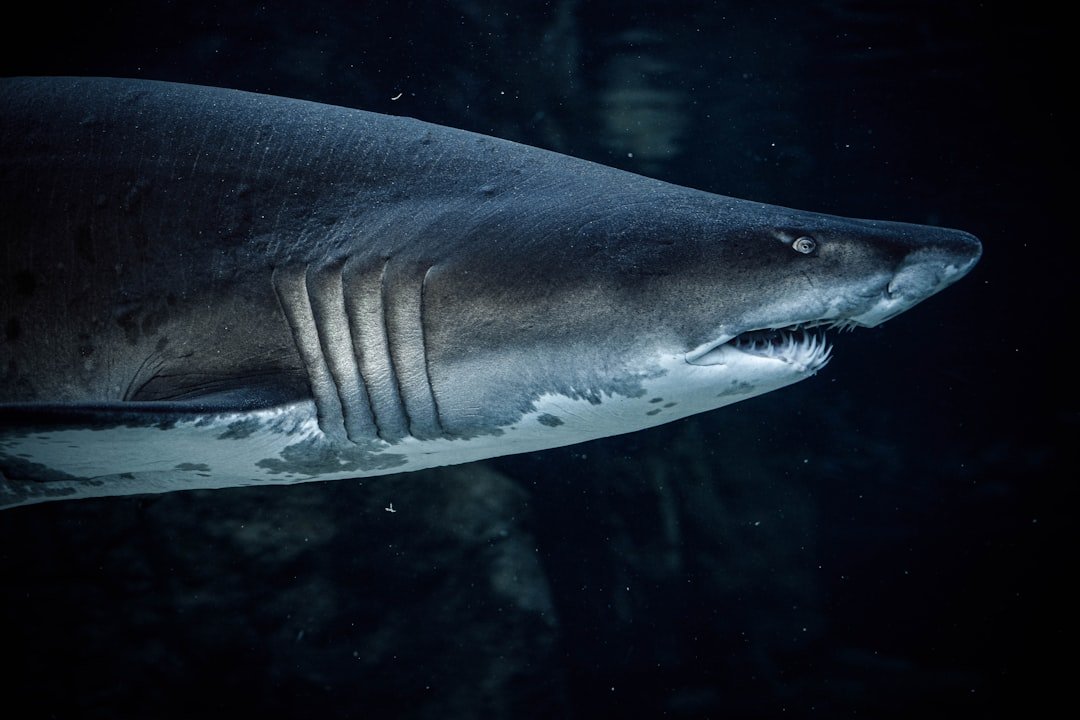The widespread removal of trees from forested areas, or deforestation, has become one of the most urgent environmental problems of our day. Urbanization, logging, infrastructure development, and agricultural growth are some of the many factors causing this phenomenon. Beyond the immediate loss of trees, deforestation has far-reaching effects on ecosystems, influencing wildlife habitats, climate regulation, and even human livelihoods. As forests are cut down, the complex network of life that depends on these ecosystems is put in danger like never before, which causes a series of ecological imbalances. Regarding deforestation, the figures are astounding.
Key Takeaways
- Deforestation is the clearing of trees and forests on a large scale, often for agricultural or commercial purposes, and it has significant environmental impacts.
- Biodiversity refers to the variety of life on Earth, including plants, animals, and microorganisms, and it is crucial for ecosystem stability and resilience.
- Deforestation is a major driver of biodiversity loss, as it destroys habitats and disrupts ecosystems, leading to the decline and extinction of many species.
- Case studies from around the world highlight the devastating impact of deforestation on biodiversity, including the loss of iconic species and disruption of ecological balance.
- The consequences of biodiversity loss are far-reaching, affecting everything from food security and human health to climate regulation and cultural heritage, making it imperative to take action to combat deforestation and preserve biodiversity.
The Food and Agriculture Organization (FAO) estimates that every year, about 10 million hectares of forest—an area roughly equal to Iceland’s size—are lost. By releasing stored carbon dioxide, this unrelenting rate of deforestation not only accelerates climate change but also reduces the planet’s ability to absorb greenhouse gases. The significant effects of deforestation on biodiversity, which is closely related to the condition of our forests and the general stability of our planet’s ecosystems, highlight how urgent it is to address this issue. The term biodiversity describes the range of life on Earth, including species diversity, genetic variants, and the ecosystems they create.
It provides vital services that keep life on Earth going & is a key element of ecological resilience and health. By promoting ecosystem stability, biodiversity makes it possible for settings to endure shocks like natural disasters, disease outbreaks, and climate change. Because of the complex interactions between species, which maintain nutrient cycles and food webs, biodiversity is essential to ecological integrity.
Also, biodiversity affects human well-being in important ways. By supplying genetic resources for crops and livestock, it supports agriculture and ensures food security in a changing climate. Developing treatments for a variety of diseases has been greatly aided by medicinal plants that come from a variety of ecosystems. Also important to human culture and mental health is biodiversity’s aesthetic & recreational value.
| Metrics | Data |
|---|---|
| Number of Species at Risk | 10,000 |
| Loss of Habitat | 80% |
| Deforestation Rate | 10 million hectares per year |
| Impact on Ecosystems | Disruption of food chains and loss of biodiversity |
Biodiverse natural landscapes provide areas for inspiration, recreation, and spiritual connection, underscoring the inherent worth of protecting the biological diversity of our planet. There is a direct and intricate link between biodiversity loss & deforestation. The immediate result of forest clearing is the loss of habitat, which is essential to the survival of innumerable species. Particularly for specialized species that are unable to migrate to new habitats or adapt to changing environments, this habitat loss causes population declines & extinctions.
For example, despite only making up around 6% of the Earth’s surface, tropical rainforests are home to more than half of all terrestrial species on the planet and are therefore especially vulnerable to deforestation. The loss of these vital habitats may cause irreparable harm to biodiversity worldwide. Deforestation also interferes with the ecological processes that sustain biodiversity.
Isolated patches produced by forest fragmentation can impede species migration and gene flow, resulting in inbreeding and a decline in genetic diversity. People may become more vulnerable to illnesses and changes in the environment as a result of this isolation. Also, removing trees degrades habitats by affecting soil health and microclimates. A vicious cycle is demonstrated by the relationship between deforestation and biodiversity loss: ecosystems become less resilient as biodiversity declines, increasing their vulnerability to additional degradation. The Amazon rainforest serves as a striking illustration of how deforestation is causing biodiversity to disappear.
The “lungs of the Earth” are a common moniker given to this enormous ecosystem’s function in producing oxygen and storing carbon. Nevertheless, substantial habitat destruction has resulted from widespread logging & agricultural expansion. With the loss of their habitats, species like the jaguar and several primates are in grave danger.
The entire ecosystem may be affected by the extinction of these apex predators, upsetting food chains and causing an overabundance of prey species. Another example is Southeast Asia, specifically Indonesia and Malaysia, where large areas of rainforest have been replaced by palm oil plantations. This change has had a significant effect on several species, including the Sumatran orangutan. These primates are currently in grave danger of extinction as a result of the rapid destruction of their habitat brought on by the harvesting of palm oil. The scenario draws attention to both the immediate effects of habitat loss and the wider ramifications for ecosystem services like soil fertility and water regulation that these forests offer.
The ramifications of biodiversity loss go beyond ecological effects; human societies are also at serious risk. The disruption of ecosystem services that are essential to human survival is one significant effect. Diverse insect populations are essential for pollination, for example; a decrease in these species can result in lower crop yields and food insecurity. In a similar vein, robust ecosystems control water cycles & clean water sources; when they deteriorate, flooding & water scarcity may increase.
Also, by reducing the planet’s capacity to store carbon, biodiversity loss makes climate change worse. Because forests absorb carbon dioxide, their loss contributes to global warming by releasing stored carbon dioxide into the atmosphere. A feedback loop that jeopardizes both natural ecosystems and human livelihoods is produced by the interaction of biodiversity loss and climate change. The vulnerability of communities that rely on these resources increases as species go extinct & ecosystems deteriorate, underscoring the pressing need for integrated conservation strategies. Numerous global initiatives aimed at the conservation and sustainable management of forest resources have emerged in response to the alarming rates of deforestation & biodiversity loss.
The creation of protected areas like national parks and wildlife reserves is one well-known strategy. These locations act as safe havens for threatened species and protect vital habitats from industrial overuse. For instance, projects that try to lessen deforestation & encourage sustainable land use practices have benefited greatly from funding provided by Brazil’s Amazon Fund. Promoting environmentally friendly forestry methods that strike a balance between economic demands & environmental preservation is another successful tactic.
Ensuring that timber products originate from sustainably managed forests is one way that certification programs like the Forest Stewardship Council (FSC) promote responsible forest management. In addition to aiding in the preservation of biodiversity, these programs offer financial incentives to nearby communities to switch from destructive to conservation-oriented activities. Because of their enduring knowledge of regional ecosystems and generations-old sustainable practices, indigenous communities are essential to the conservation of biodiversity.
Numerous indigenous cultures have created complex land management systems that place a high value on ecological harmony and reverence for the natural world. By combining crops with native tree species, indigenous peoples in the Amazon, for example, use traditional agroforestry techniques that improve ecosystem health and food security while promoting biodiversity. Moreover, large areas of land with abundant biodiversity are frequently cared for by indigenous groups. Their land rights are becoming more widely acknowledged as being crucial to successful conservation initiatives.
Results from cooperative projects that include indigenous peoples in land use decision-making can be more sustainable. The preservation of biodiversity can be achieved through more comprehensive & successful conservation strategies that value indigenous knowledge systems in addition to scientific methods. At the local, national, and international levels, there is an urgent need for coordinated action due to the complex relationship between deforestation and biodiversity loss.
Preserving our forests and the abundant biodiversity they support must be our top priority as we face the threats posed by climate change and environmental degradation. This necessitates a change in societal values toward sustainability and respect for the environment in addition to changes in policy. People can help by promoting policies that protect forests, buying sustainable goods, and spreading the word about how important it is to conserve biodiversity. Sustainable land management initiatives can also be strengthened by interacting with local communities & defending the rights of indigenous people.
Future generations can benefit from a healthier planet where nature and people coexist peacefully if we support a global movement aimed at stopping deforestation and protecting biodiversity.



